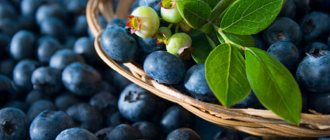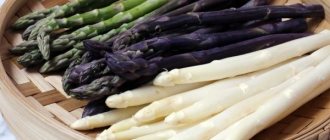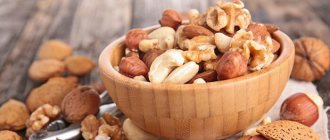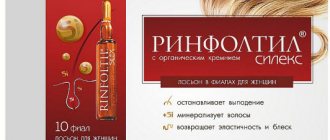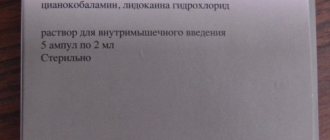Every housewife knows about the aromatic spice – cinnamon, which gives dishes and drinks a special taste. However, cinnamon is not only a spicy seasoning in cooking, but also an effective healing agent and a piquant component in perfumes. In ancient times, wars were started because of this spice, countries were ruined and enriched. Ancient people learned to extract cinnamon at the dawn of the first civilizations. Now this seasoning occupies an honorable place in the cooking of many peoples of the world, and this is well deserved.
Story
Cinnamon was first mentioned in Chinese manuscripts about 5 thousand years ago. From the story of Herodotus, in order to find the spice bark, one had to go through many obstacles [1]. Arab merchants made up these stories to increase sales of the spice. That is why in Europe for a long time cinnamon was considered unattainable, accessible only to a select few.
Content:
- Story
- Characteristic
- Chemical composition and nutritional value
- Beneficial features
- Contraindications
- Proper storage
- Treatment
- Weight loss
- Cooking recipes
- Cosmetic procedures
This spice is also mentioned in the Bible. The Old Testament says that God told Moses to take cinnamon with him from Egypt [2]. The ancient Indian treatise Ayurveda says that cinnamon is a sweet spice with a pungent taste. In ancient times, entire caravans were sent with this spice. In Ancient Egypt, cinnamon was equated with gold. In the Middle Ages, the spice was used more as an aromatic spice. Venice was the main supplier of cinnamon for Europe, which purchased the spice from Alexandria. There is also mention of this seasoning in the Russian medicinal book “Cool Vertograd”.
Benefits of cinnamon for hair
Since ancient times, the healing properties of cinnamon have been valued, allowing it to make hair strong and beautiful. Cinnamon provides improved blood circulation in the body, which means that the hair roots and scalp will receive the necessary nutrients and oxygen, resulting in healthy and strong hair.
Stimulates hair growth
Your hair will definitely love the combination of honey and cinnamon. For best results, apply a hair mask once a week. Mix a teaspoon of ground cinnamon, a teaspoon of honey, a tablespoon of olive masala and an egg. Apply the mask to your hair and leave it on for 20 minutes, then rinse thoroughly with a mild shampoo.
Cleanses the scalp
Cinnamon has a beneficial effect on the scalp, acting as an exfoliant. Mix a teaspoon of ground cinnamon, a teaspoon of honey and a quarter cup of warm olive oil and massage into the scalp, this stimulates skin cleansing. Leave the mixture on your hair for 20 minutes, then rinse with regular shampoo.
Lightens hair
If necessary, you can lighten your hair with cinnamon. Mix equal parts of your hair conditioner and cinnamon powder. Cover the entire length of your hair with the mixture. Try to apply evenly to avoid uneven color. Comb and detangle your hair thoroughly and put on a shower cap. Leave the mixture overnight and rinse your hair in the morning.
Characteristic
Cinnamon is an evergreen tree of the Laurel family. In addition, dried tree bark is also called cinnamon. Since ancient times, two types of this spice have been distinguished: real (Ceylon) cinnamon and Chinese, or cassia. Among the distinctive features of the first variety are the dark brown color, rich aroma and pungent taste, as well as the fragility of the sticks. Cassia, on the other hand, has a light brown color, a less intense taste, and in the form of sticks it is difficult to break.
Real cinnamon is made in India and Ceylon from the bark of cinnamon trees. The best varieties of spices in the form of sticks are quite thin (as thick as a sheet of paper). Because of their thinness, spice sticks are placed inside each other. The tree is grown for two years and then cut down to the root. Many young shoots grow from it, from which the thin bark is cut off. For sale, sticks are cut into 5–10 cm lengths. Local cooks add aromatic cinnamon tree leaves to soups instead of bay leaves. Ceylon cinnamon is considered the best. Today, the spice is grown in Sri Lanka, Malaysia, Brazil, India, Indonesia and other countries.
Types of cinnamon
Using mass spectrometry (FIMS), it was confirmed that there are 4 main types of cinnamon. [1]
- Ceylon cinnamon (Cinnamomum zeylanicum) is native to Sri Lanka.
Synonyms: real cinnamon, Senegalese cinnamon, noble cinnamon, cinnamon. They are also grown in India, Indonesia, Malaysia, Brazil, and Guiana (Fr.).
Traits of Ceylon cinnamon:
- Type of tube;
- The surface is light brown or yellow-brown;
- Thickness - up to 1 mm, the best varieties have the thickness of writing paper;
- Very brittle;
- It has a delicate aroma and a sweetish-burning taste.
- Chinese cinnamon (Cinnamomum Cassia) is native to Southern China.
Grown in Indonesia, Cambodia, Laos. It contains a large amount of toxic coumarin. It is also called: plain cinnamon, flavored cinnamon, Indonesian cinnamon, fake cinnamon, cassia, cassia canel.
Features of Chinese cinnamon:
- Looks like fragments of bark;
- The outer surface is reddish-brown with grey-brown spots;
- Thickness - more than 2 mm;
- A sharper sweetish-burning taste with a tart-astringent component.
- Malabar cinnamon (Cinnamomum Tamala Nees) is native to Southwestern India.
Also called: tree cinnamon, brown cinnamon, cassia vera.
Traits of Malabar Cinnamon:
- Rough appearance;
- Uneven dark brown color;
- More than 3 mm thick;
- Sharply astringent taste with a hint of bitterness.
- Cinnamon (Cinnamomum Culilawan) is native to the Moluccas Islands.
Synonym: spicy cinnamon. Cultivated in Indonesia.
Features of Cinnamon Cinnamon:
- Type of pieces of thin bark 1-2 cm long;
- Outside - whitish-beige, and inside - yellow-red;
- Pronounced spicy-spicy aroma and spicy-burning taste.
Chemical composition and nutritional value
The chemical composition of cinnamon includes tannins, resins, gums, phenolic acids, vitamins and minerals.
Ceylon cinnamon also contains the volatile compound eugenol, which gives the spice a pleasant and rich aroma. Cassia contains starch and coumarin, which are hazardous to health. In real cinnamon, these substances are present in small doses. Nutritional value of cinnamon per 100 grams (approximately) [3]
| Nutrient | Quantity | Average daily intake for an adult |
| Calorie content | 247 kcal | 1684 kcal |
| Squirrels | 3.99 g | 76 g |
| Fats | 1.24 g | 56 g |
| Carbohydrates | 27.49 g | 219 g |
| Alimentary fiber | 53.1 g | 20 g |
| Water | 10.58 g | 2273 g |
| Ash | 3.6 g | – |
| Vitamin A | 15 mcg | 900 mcg |
| Lutein | 222 mcg | – |
| Vitamin B2 | 0.041 mg | 1.8 mg |
| Vitamin B4 | 11 mg | 500 mg |
| Vitamin B9 | 6 mcg | 400 mcg |
| Vitamin C | 3.8 mg | 90 mg |
| Vitamin E | 2.32 mg | 15 mg |
| Vitamin K | 31.2 mcg | 120 mcg |
| Vitamin PP | 1.332 mg | 20 mg |
| Potassium | 431 mg | 2500 mg |
| Calcium | 1002 mg | 1000 mg |
| Magnesium | 60 mg | 400 mg |
| Sodium | 10 mg | 1300 mg |
| Phosphorus | 64 mg | 800 mg |
| Iron | 8.32 mg | 18 mg |
| Manganese | 17.466 mg | 2 mg |
| Copper | 339 mcg | 1000 mcg |
| Selenium | 3.1 mcg | 55 mcg |
| Zinc | 1.83 mg | 12 mg |
| Omega-3 | 0.011 g | 0.9–3.7 g |
| Omega-6 | 0.044 g | 4.7–16.8 g |
Tips for use/preparation
Cinnamon milk
Making cinnamon milk is easy. No problems or complications!
Recipe 1
You will need
- Milk – 1 cup
- Cinnamon stick - 1 (You can take a teaspoon of cinnamon powder instead, but it does not dissolve as well and may cause discomfort in the throat)
- Honey – 1 teaspoon
How to cook
- The first thing you need to do is heat the milk, bringing it almost to a boil.
- After heating the milk, pour it into a cup and add a cinnamon stick.
- Cover the cup and let it sit for 10 minutes. Finally, add honey for taste.
- Children love cinnamon milk with honey because it makes it sweeter; most adults prefer to drink it without honey.
Beneficial features
Since ancient times, the healing properties of cinnamon have been known. Modern research confirms that the use of this seasoning has a positive effect on the body, increases tone, strengthens the immune system and helps overcome many diseases.
To date, the effectiveness of cinnamon in the treatment of diabetes has been proven [4]. Half a teaspoon of spice per day regulates blood sugar levels and prevents the development of inflammatory processes in the body. Some experts claim that this spice can help fight cancer [5]. Cinnamon is widely used as an antiseptic. It effectively cleanses the choleretic system and liver, removes excess fluid and salts from the body.
For school-age children, cinnamon will be effective as an antiviral and antibacterial agent. In addition, spice increases concentration and improves vision.
For women, cinnamon is indispensable during painful menstruation. It relieves pain, increases overall tone and removes irritability. In addition, regular use of the spice enhances sexuality.
In men, the use of cinnamon helps increase potency. The aroma of spice significantly increases the sensitivity of erogenous zones and stimulates libido.
This spice is known to protect against heart attack, lower cholesterol and prevent blood clots [6]. It also helps normalize blood pressure, improve memory and has a positive effect on the body in cases of insomnia and depression.
Cinnamon effectively helps with coughs and severe sore throats, as well as toothaches.
The spice helps strengthen the body's cardiovascular system and protects against heart disease.
With the help of spices you can eliminate bad breath. To do this, chew a small piece of cinnamon. Additionally, it is recommended to gargle in the morning with a solution of one teaspoon of honey and spices.
Cinnamon prevents the growth of various bacteria, which has a positive effect on the functioning of the stomach. In addition, the spice significantly reduces acidity levels, eliminates diarrhea and nausea.
Spice oil stimulates creativity and new ideas. The smell of cinnamon activates the cognitive function of the brain, increases alertness, and also relieves the blues and anxiety.
Properties and uses of cinnamon
Cinnamon is a spice that provokes pronounced effects on different body systems. Therefore, it is important to know about the properties of cinnamon and take this into account when wanting to add the spice to dishes.
- The spice has a rich, pungent aroma. Inhaling cinnamon can cause you to sneeze violently. An excess of inhaled/eaten cinnamon powder can lead to swelling of the mucous membranes.
- A large amount of cinnamon can lead to overstimulation of the nervous system. Insomnia, muscle tone, and nervous tension are symptoms of a spice overdose.
- You should not consume more than a small pinch of cinnamon at a time. Violation of this norm can lead to spasm of the swallowing muscles, causing shortness of breath, vomiting, and nausea.
- Cinnamon thins the blood, and therefore should be excluded from the diet during periods of bleeding and other blood diseases.
- Eating the spice can cause uterine tone. Therefore, it is not recommended to indulge in this spice during pregnancy.
- Spice does not always combine with other spices, so you need to be careful when mixing seasonings.
- Excessive consumption of this spice can cause headaches and dizziness.
If there are no contraindications and if you use the spice in moderation, then you will not have to face any unpleasant consequences. But this applies to any seasonings and products. Therefore, it is necessary to comply with the norm always and in everything.
Application
It is known that the most common use for cinnamon is cooking.
This spice is added:
- in confectionery products (sweets, desserts);
- baking;
- fruit and vegetable salads;
- warming and cooling drinks;
- sauces and marinades;
- soups.
The most common use for cinnamon is baking. Cookies, scones, pies, rolls and cinnamon gingerbread are classics recognized around the world! But it’s not surprising to find tea with cinnamon, warming punches and fruit drinks with the addition of this spice. The spice adds an original note to salad dressings and gravies for main courses.
This spice can compete for leadership with a seasoning like vanilla! After all, the aroma of cinnamon also attracts people to bakeries and whets the appetite in the home kitchen.
ethnoscience
Some housewives buy cinnamon not only to bake fragrant gingerbread cookies and buns. It turns out that the spice is widely used in folk medicine. A little cinnamon powder is added to remedies to treat diseases of the throat, blood, reproductive system, joints, and muscle tissue. It is believed that this spice is good for preventing the formation of blood clots, the development of colon cancer, and diseases of the oral cavity and upper respiratory tract. This spice is good for creating products aimed at stabilizing the functioning of the nervous system. They say cinnamon helps prevent heart attacks and vascular diseases. However, before turning to traditional medicine and using cinnamon for medicinal and preventive purposes, you should definitely discuss this with your doctor.
Cosmetology
This spice is favored both in official cosmetology and is valued when creating homemade skin and hair care products. The spice is often included in creams, shampoos, and masks. And this product is used not only for the purpose of aromatizing substances. After all, cinnamon is also valuable from the point of view of obtaining a positive effect.
How to use cinnamon
A bag of cinnamon can be found in almost any home. Many people know recipes for sweets with this spice. But how else can you use sweet-spicy seasoning? Let's tell you a couple of simple options.
Orange and cinnamon drink for vigor and strength
This drink is prepared so simply that even an inexperienced cook, and even a person without special cooking skills, can master the preparation. But a glass of orange and cinnamon drink will help you relax, calm down and recharge with vital energy.
To prepare you will need:
- cinnamon stick - 1 pc.;
- warm boiled water - 1 liter;
- ripe orange - 1 pc.
Pour boiled water into a glass or ceramic container with a lid. Allow to cool literally to a temperature of 38–40 degrees. Place a cinnamon stick in a container and let it brew for 40 minutes. Cut the orange into slices. Squeeze 3-5 drops of orange juice into the container with the drink. Then pour the drink into glasses or cups. Garnish each glass with an orange slice. All! The drink can be served to guests and household members.
Cinnamon for weight loss
For those wishing to get rid of extra pounds, we can recommend the following remedy (beware, there are contraindications). This is honey cinnamon water!
To prepare you will need:
- cinnamon stick - 1 pc.;
- natural honey - ½ tablespoon;
- clean boiled water - 1 liter.
Cinnamon water with honey is prepared in the same way as orange water. Only honey should be added when the liquid has cooled to a temperature of 36–37 degrees. A glass of this water should be drunk 30 minutes before breakfast and 1 hour before bedtime. This water helps improve metabolism, promotes the breakdown of fatty tissue and gently removes excess fluid. Before bed, you will appreciate a mild calming effect.
This is such an interesting spice, cinnamon! Cinnamon root is used in folk medicine and cosmetology, but ready-made powder is more often used. This wonderful spice should definitely be at home if there are no contraindications and if the seasoning is perceived positively. And it’s not difficult to figure out how to use this aromatic additive. After all, pampering yourself with cinnamon cookies and gingerbread is a good thing. But if necessary, you can brew yourself tea with cinnamon or make a warming infusion with the addition of this spice.
Contraindications
Spice in reasonable doses has a positive effect on the body. However, excessive consumption of the spice can cause loss of energy, severe headaches and depression [7]. In addition, the coumarin contained in cinnamon in large doses can cause liver and kidney damage. Considering that Chinese cinnamon (cassia) contains one hundred times more coumarin than the Ceylon variety, doctors strongly recommend that when purchasing, you specify where the spice came from [8].
In addition, it is not recommended to use this spice for people taking medications. This is due to the fact that when interacting with an antibiotic, it affects its chemical composition.
The spice is contraindicated in the following cases [7][9]:
- age up to three years;
- pregnancy (affects uterine contractions, which can lead to premature birth);
- breastfeeding (affects the taste of breast milk);
- poor blood clotting (blood thins);
- peptic ulcers;
- high blood pressure and fever;
- chemotherapy;
- individual intolerance to the spice and allergic reaction to it.
Cinnamon: contraindications
Cinnamon is a spice with a pronounced taste and aroma. Of course, this spice is not perfect. It cannot be eaten by everyone and not always.
There are a number of contraindications:
- individual intolerance to the product;
- food allergy in the acute period;
- exacerbation of hypertension (cinnamon increases blood pressure);
- inflammatory processes in the oral cavity and gastrointestinal tract;
- pregnancy (1st and 2nd trimesters, with caution in the 3rd);
- breastfeeding period;
- children under 4 years of age.
For the first time, you should try cinnamon with caution. You need to start with very small volumes of spices. If you have chronic or acute diseases, it would be useful to ask your doctor about the admissibility of consuming cinnamon.
Proper storage
The spice must be stored in a closed glass container in a dry and dark place. This will allow you to preserve the beneficial properties of ground spices for six months, and the sticks for a year [10].
If a spice has lost its smell and freshness, it means it is devoid of nutrients and is harmful to health.
It is recommended to buy ground cinnamon in small quantities. When choosing a product, you need to smell it and understand how stable the aroma is. To test a spice, you can take an iodine solution and add it to a portion of the powder. If its color turns dark blue, then it is cassia; if no obvious changes occur, then you have purchased Ceylon cinnamon [11].
Cinnamon oil
The healing properties of cinnamon are transferred to cinnamon oil. The aroma and taste of the spice is due precisely to the aromatic oil, which is contained in the bark in an amount of 0.5–1%. Essential oil is obtained by grinding the bark of a tree, soaking it in water, and then distilling the infusion. The oil will be yellow-gold in color, has a characteristic cinnamon smell and a burning taste. This taste and rich warm smell is caused by the presence of the main component of the oil - cinnamaldehyde (cinnamal). As the oil oxidizes over time, it becomes very dark and acquires a resinous consistency.
It is noteworthy that it is the bark of the tree, and not the leaves or greens, like other plants, that is rich in oil essence. Essential oil makes up about 4% of the total mass of the bark. The composition of the components included in cinnamon oil has not been fully deciphered to this day. Scientists have isolated a specific polyphenol from cinnamon oil that helps lower blood sugar.
Treatment
Cinnamon can be used to cure many ailments. External use of the spice oil is popular for massages and rubbing. To prepare the aroma oil, take 10 ml of vegetable oil and mix with 2-3 drops of cinnamon oil.
For weakness, delayed menstruation, impotence, colds, diarrhea and flu, a drink made from spice oil, honey and herbal tea will be effective. To prepare, use 1-2 drops of oil and a teaspoon of honey, adding these ingredients to herbal tea. For inhalation of the upper respiratory tract, use a few drops of spice oil with hot water.
When you have the flu or hypothermia, it is useful to drink a drink of hot wine and cinnamon, as well as hot water, honey, lemon juice, one clove and a pinch of spice. An excellent flu prevention drink is a drink made from half a teaspoon of spice, a pinch of ground black pepper and honey. It is recommended to drink one glass every three hours. If the cold is in its infancy, it is recommended to prepare a drink of cinnamon, cardamom and ginger. All ingredients should be brewed in equal doses of 1/3 teaspoon per glass of boiling water and drunk every hour. To get rid of a headache due to a cold, prepare a paste of spices and apply it to the forehead for a certain time.
Scientists in Germany have conducted a number of studies that prove that cinnamon can eliminate some genitourinary tract infections [12].
How to take cinnamon for diabetes?
How does cinnamon lower blood sugar?
Blood sugar levels decrease when taking cinnamon due to the presence of phenol in its composition (up to 18% of the total weight). This substance normalizes cell sensitivity to insulin and prevents disruptions in carbohydrate metabolism.
Which type of cinnamon is more effective?
To normalize blood sugar levels, it is better to use Chinese varieties of cinnamon, namely cassia.
How to take cinnamon for diabetes?
According to WHO recommendations, if a person does not suffer from liver disease or an allergy to cinnamon, it is taken 6 g per day for 6 weeks. If necessary, the course is interrupted for a week and then repeated.
Recommendations for patients with diabetes:
- 1/4 teaspoon for 5 days.
- Break for 2 days. You can take turmeric at this time.
- 1/4 teaspoon for 5 days.
The maximum daily dose is 1/2 teaspoon. Cinnamon is added to various dishes: cereals, soups, desserts, drinks.
What results should I expect?
Cinnamon cannot be used to cure diabetes, but it is quite possible to reduce blood sugar levels by 25-30%. Taking the spice helps prevent the development of complications of the disease, since the phenols included in its composition neutralize the destructive effect of sugars on the body.
When taking cinnamon, you should regularly measure your blood sugar levels. Treatment is started only after consultation with a doctor, as there is a risk of a decrease in insulin levels with the development of hypoglycemia.
Weight loss
The spice has been successfully used for weight loss. There are many ways to lose weight using cinnamon. Using the spice, you can lose up to 2 kg in a week. Thanks to its ability to enhance metabolism, it effectively burns fat. Food in the body begins to be processed faster, without remaining in the form of fat deposits. In addition, the spice regulates blood glucose levels and affects the body’s natural self-cleansing processes. This leads to the elimination of toxins, excess fluid and accumulated waste. In addition, the smell of cinnamon reduces appetite. As a result, the spice leads not only to weight loss, but also to cleansing the body of harmful substances.
The most popular weight loss drink is kefir with cinnamon. To prepare it you will need 1.5 liters of kefir and 1 tsp. spices. The ingredients need to be mixed and refrigerated. It is recommended to drink one glass of the prepared product throughout the day.
Cinnamon and ginger are also an ideal combination for weight loss. To prepare such a fragrant cocktail, you need to mix one glass of low-fat kefir, half a teaspoon of spices and ginger, and also add a pinch of ground red pepper. It is recommended to drink before bed [13].
To cleanse the body and remove the stomach, use a mixture of honey and cinnamon. In a month of taking this product you can lose up to 7 kg of excess weight.
Harm of cinnamon
As such, cinnamon will not be harmful to human health. The main condition for using this spice is not to overuse it, that is, do not eat it in large spoons several times a day. At first glance, this is understandable, but the fact is that some people believe: the higher the dosage, the more noticeable the result will be (especially for those who want to lose weight quickly). Unfortunately, this won't work with cinnamon. In reasonable doses, this seasoning promotes health; in large doses, it can have the opposite effect. For example, if a small pinch of cinnamon can stimulate brain function and improve visual processes, then an excessive amount of this seasoning will cause loss of energy, depression and acute headache.
It's worth keeping in mind that cinnamon contains coumarin, an aromatic substance that can cause liver damage without causing symptoms. People who are sensitive to this substance and those who suffer from severe liver diseases are especially susceptible to the effects of coumarin.
The smallest amount of this substance is contained in Ceylon cinnamon, and Chinese (so-called cassia) can contain 100 times more coumarin
.
Cassia contains approximately 5 mg of coumarin per teaspoon (2 grams), while Ceylon cinnamon contains only traces.
Video: how to distinguish real cinnamon from fake:
Here are 5 possible side effects of eating too much cassia cinnamon:
- Liver damage. The recommended daily limit for coumarin is approximately 0.1 mg/kg body weight, or 5 mg per day for a 60 kg person. That is, one and a half teaspoons of Chinese cinnamon per day can lead to an overdose of coumarin; it is worth noting that Ceylon cinnamon does not contain coumarin. A 73-year-old woman developed sudden acute hepatitis after just a week of taking high-coumarin cinnamon along with a statin. [16] [17]
- Cinnamon increases the risk of cancer.
Too much coumarin consumption in rodent studies has shown tumor damage to the lungs, liver and kidneys. [18]
The way in which Coumarin can cause tumors is unclear. Scientists suggest that coumarin damages cells in the liver, kidneys and lungs. Over time, damaged cells are replaced by tumor cells. However, more research is needed to determine whether this also applies to humans.
- Cinnamon causes mouth ulcers. The cinnamaldehyde contained in cinnamon in large doses causes an allergic reaction in the oral cavity. The fact is that human saliva retains this component in the mouth for a long time. [19]
It should be noted that cinnamaldehyde causes gum damage, ulcers, white plaque, itching and burning only if you are allergic to it. The highest content of cinnamaldehyde is in chewing gum and in cinnamon oil. [20]
- Cinnamon may cause your blood sugar to become too low. Cinnamon can mimic the actions of insulin, the hormone responsible for removing sugar. Therefore, people with low sugar levels are not advised to consume cinnamon as it may lead to hypoglycemia, fatigue, dizziness and fainting. [21]
Diabetics should use cinnamon with particular caution. Because it increases the effect of medications.
- Cinnamon may cause breathing problems. Cinnamon has a fine structure and is easy to inhale. Accidental inhalation of cinnamon can lead to coughing, vomiting, and difficulty breathing. People with asthma should be especially careful.[22]
Cooking recipes
In cooking, cinnamon is used in baked goods, fruit desserts, puddings and drinks.
Oriental drink with cinnamon
Best materials of the month
- Coronaviruses: SARS-CoV-2 (COVID-19)
- Antibiotics for the prevention and treatment of COVID-19: how effective are they?
- The most common "office" diseases
- Does vodka kill coronavirus?
- How to stay alive on our roads?
Pour one or two tablespoons of spice into a glass of boiling water and leave for about 5-7 minutes. Then strain and add 1-2 tablespoons of condensed milk.
Wine with cinnamon
Add a few spice sticks to the wine and heat over low heat. Drink warm.
Cinnamon toast
The sliced bread is toasted on one side. Put butter on the other side and sprinkle with a mixture of spices and sugar and fry until golden brown.
Benefits of cinnamon for skin
Cinnamon has antimicrobial properties that can benefit your skin. Find out more about how this humble spice can help clear up your skin, saving you the hassle of spas and expensive treatments.
Heals acne, pimples and blemishes
Cinnamon helps get rid of acne and pimples on the face and body. This is achieved by drying the skin and allowing blood and oxygen to flow to its outer surface. The simplest recipe is to mix three tablespoons of honey and one tablespoon of spice. Apply the resulting paste to the affected areas and leave it overnight. Or apply for 20 minutes and then rinse with water. Repeat after a week.
Soothes dry skin
Cinnamon can remove dead skin cells and restore shine and elasticity to the skin. Make a scrub by mixing sea salt, almond and olive oil, honey and cinnamon to help with dry skin.
Improves complexion
Thanks to its antifungal and antibacterial properties, cinnamon improves complexion. Mash one small banana, plain yogurt, ground cinnamon and lemon juice and blend until smooth. Apply to face and leave for 15 minutes, then rinse with room temperature water. Relieves eczema: Mix a teaspoon of honey and cinnamon. Apply a thin layer of the resulting paste to the affected areas. For best results, continue treatments for a week.
Smoothes wrinkles
Cinnamon improves blood circulation, increases the flow of oxygen and blood to the outer surface of the skin, resulting in a smoother surface and an improved complexion. Prepare a mixture of a few drops of cinnamon essential oil and Vaseline, apply to the entire face except the area around the eyes.
5. Prevents skin infections, heals scars and wounds
For any skin infection, make a paste of honey and cinnamon powder in equal proportions and apply to the affected area. Cinnamon is also known to treat ringworm. Moreover, to heal scars and cuts, simply sprinkle cinnamon powder on them to kill germs and heal the wound quickly.
Softens the skin of the feet
Thanks to its antioxidant properties, cinnamon softens rough and dry skin. Prepare a foot bath by mixing the juice of five lemons, a tablespoon of olive oil, a quarter cup of whole milk, half a cup of water and two tablespoons of ground cinnamon. Soak your feet in this bath for fifteen minutes and your skin will become soft and smooth.

